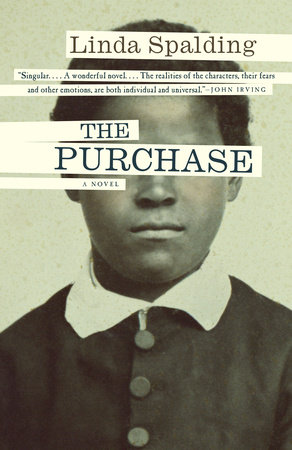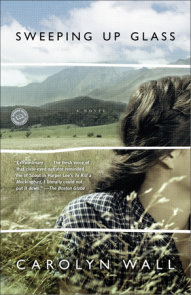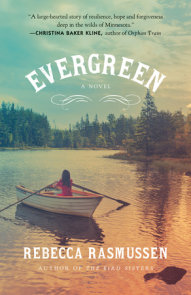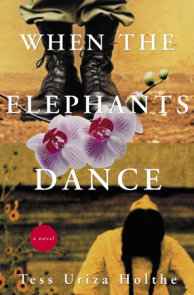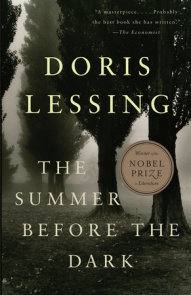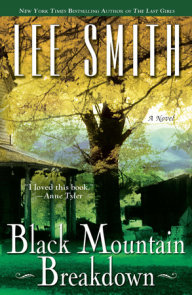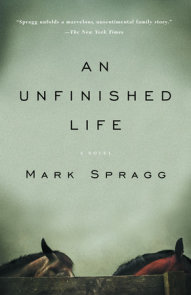READERS GUIDE
This reading group guide is designed to help raise issues and encourage discussion about Linda Spalding’s The Purchase.Introduction
“Spalding’s work brilliantly depicts the indelible stain that slavery has left on the moral fabric of America.”—Richmond Times-Dispatch
In 1798, Daniel Dickinson, recently widowed and shunned by his fellow Quakers for marrying his Methodist servant in order to help with his five young children, moves his family down the Wilderness Road from Pennsylvania to southwestern Virginia. Although determined to hold on to his Quaker traditions and abolitionist beliefs, Daniel becomes the owner of a young boy named Onesimus, setting in motion a twisted chain of events that leads to tragedy and murder, forever changing his children’s lives and driving the book to an unexpected conclusion.
A powerful novel of sacrifice and redemption set in a tiny community on the edge of the frontier, this spellbinding narrative unfolds around Daniel, who struggles to maintain his faith; his young wife, Ruth, who must find her own way; and Mary, the eldest child, who is bound to a runaway slave by a terrible secret. Darkly evocative, The Purchase is as hard-edged as the realities of pioneer life.
Questions and Topics for Discussion
1. In what ways does Daniel’s religious background shape the way he thinks about the world around him? How does the way he sees himself differ from the way other characters see him?
2. Would Daniel have been a different father (and man) had his first wife lived? How? Why can’t he be a loving, devoted husband to Ruth?
3. Why does Daniel go against his beliefs and purchase a slave? What are his reasons, much later, for going to the auctioneer’s house instead of the doctor’s when one of his children is dying?
4. Discuss the importance of the lack of mothers for the women in this novel. From the stories the characters remember and tell, what kind of mother was Daniel’s first wife? Discuss Luveen’s importance as a surrogate mother for Mary. What kind of mother is Bett? What sort of “mother” is Mary to Bett’s son and to her own siblings? Do you think she will be a strong surrogate mother to Bett’s grandchild?
5. What in the importance of trees in the novel? What do trees represent to Onesimus and Bry?
6. The book is dedicated “In memory of my brother Skip, son of Jacob, who was son of Boyd, who was son of Martin, who was son of John, who was son of Daniel Dickinson.” Discuss this dedication and its significance on your reading experience, if any. Does knowing the book was inspired by the author’s ancestors make any difference to your reading experience?
7. Discuss the title. Why such a stark and simple title for such a large and complicated story?
8. In what ways is this book similar to Cold Mountain in its attention to the details and descriptions of daily life on the American frontier/wilderness?
9. Compare and contrast Mary and Ruth at the beginning and at the end of the novel. Describe their relationship. Why don’t they like each other? Do they ever learn to get along? Do they share any traits? Do you think they would have been friends if Ruth wasn’t married to Mary’s father? What does it say about Ruth that she gives her newly purchased dress to Mary? Which of the two women is a more sympathetic character?
10. Why does it say about Daniel that he marries Ruth? Since his Quaker community disowns him because Ruth is Methodist, why didn’t he marry a Quaker woman instead, and employ Ruth as a maid?
11. Why does Daniel decide to travel with his five children and Ruth to Virginia?
12. What is the importance of the stories from Virgil’s Aeneid and the Old Testament for Mary and the children? How does Mary connect these stories with Onesimus’s own history and predicament, and with her own life?
13. How do religion and spirituality play into the novel? Discuss the importance and role of both Quaker and Methodist Christianity on Daniel, Mary and Ruth, and the spirituality of Bett. How different are the versions of faith each character has?
14. Do you believe Ruth’s claim to have been spoken to by an angel? Does she believe it? Who put the idea into her head?
15. How do Daniel’s Quaker traditions and ethics crumble as he spends more and more time away from his former community and on the frontier? Which traditions stay with him? With Mary?
16. What is the importance of remembering childhood stories and traditions for Mary (both of her mother and her nanny, Luveen), Onesimus, and Bett. How useful are these stories out on the frontier?
17. The novel starts and ends with Daniel. Why do you think, when there are so many strong female characters, that the author chose to do this? Do you believe this is ultimately Daniel’s story? Why or why not?
18. Describe Mary’s relationship with Bett and with Onesimus. Who is she trying to save when she hits Jester Fox? How does she become closer to them than to anyone in her own family or, as time goes on, her husband? Why does she refuse to free Bett?
19. Compare and contrast Daniel with the other white men of the novel, especially Misters Jones and Fox.
20. Over the course of the novel, Daniel’s relationship with God changes. How and why? Do you think he finds peace with himself and his God by the end?
21. Does Daniel grow to love Ruth over the course of the novel? Why does he blame her for Joseph’s death? How does Ruth finally assert herself at the end of the novel? Do you think her relationship with her husband will grow stronger?
22. What is the importance of Bett being a healer and knowing homeopathic remedies that the white doctor doesn’t know or believe in? Why won’t she share her secrets with Mary?
23. Discuss the various physical homes in this novel: the Pennsylvania house, Onesimus’s hut, Daniel’s cabin, Wiley’s house, the Foxes house. Why does Benjamin build his house/mansion right in front of his father’s smaller house? Is there a significance to this?
24. Why does Jemima run off with and bind herself to Rafe Fox, despite being aware of the history and animosities between the two families? Are her motives simple or complex? What are the choices and opportunities for a spirited, pretty girl like her out on the frontier? Why is she so devoted to Bry?
25. Discuss Bry. How is he a product of both the white and black worlds of rural Virginia in the early 1800s. What do you think will become of him? Will he ever not be an outsider?
26. Caryl Phillips has lauded this novel, calling it “a poised and moving novel about the indignities of slavery and the moral stain at the inception of the American republic.” What ultimately is this novel saying about this part of American history and its effects on future generations?









